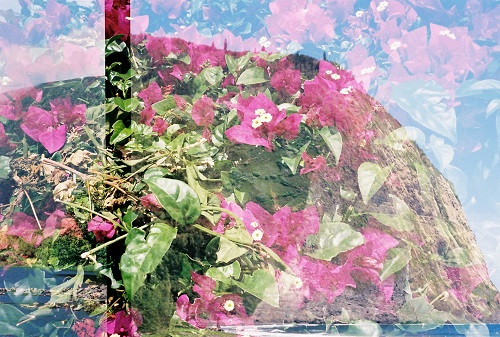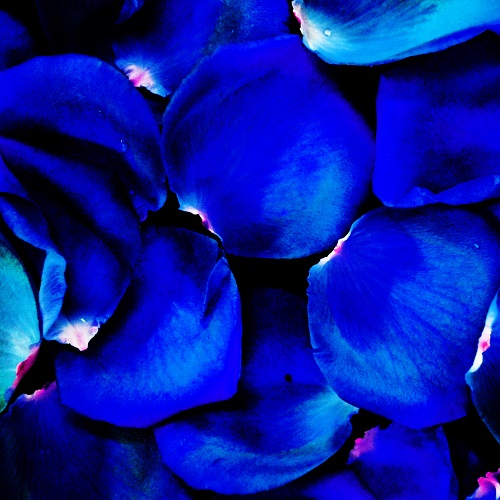Last month we held a very successful class for those keen to learn the Photoshop basics to get their designs on fabric. It was a full class and a big day of discovering the program, having a play and opening up the world of digital fabric printing possibilities to some eager creatives. We all had fun even if there was a lot of material to cover and get a handle on, we can’t wait to see what the students come up with and print in the future!

Coming up on December 3 we have another exciting class to get the creative juices flowing and it couldn’t come at a more perfect time of the year. Our Design Your Own Product Workshop gives you a chance to have a play in Photoshop with some of the MANY manipulation options, and turn your photographs or artwork into a product ready for printing and gifting over the festive season. Two gifts in one really, you get the chance to discover the possibilities in Photoshop and learn about digital fabric printing, AND you have the option to have your creation printed at the end. Bonus!
If you’ve been dreaming of our own cushion prints or yoga leggings or even a statement scarf, Design Your Own Product is the workshop for you. This is a one day class focusing on the manipulation options in Photoshop and using these to develop a placement print ready for printing.
There’s no time like the present to design your own unique present! Book online today before the class fills up!
Save
Order your fabric now to receive it before Christmas !
- This year we will be closed from 23rd of December to 9th of January.
- No orders will be printed during our closed period, however we will be accepting online orders to be printed after the 9th January 2017.
- After the holiday first orders will be due to dispatch on Friday the 13th January.
Express orders
Last express order 21st December before 12 pm, no delivery option for express orders, pick up option only.
Pick-up orders important dates
For local pick-ups before holidays, last fabric order should be submitted Monday 19th December.
Last order for cushions, 9th December for pick-up before Christmas.
Orders for national and international deliveries important dates
If you would like to receive your order before Christmas you must order before:
– Friday 2nd December for cushion orders.
-Friday 9th December for all fabric orders.
For remote locations, last fabric order for delivery before Christmas is 2nd December, orders to remote locations will be shipped via Australian Post.
International orders will be shipped via DHL Express couriers.
We cannot guarantee delivery before Christmas on orders submitted after the above dates.
Order your custom fabric NOW.

We are introducing our new fabric designer JeliRAD. JeliRAD won our Winter Blooms fabric design competition and her winning design is for sale our fabric shop!

Her Double Exposure print is a beautiful romantic floral design that is great for a dress or swimwear and is easy to wear and implement within various fashion garments.
JeliRAD is a passionate surface designer her work is inspired by surrounds and nature. She lives in beautiful Byron Bay surrounded by pristine beaches, sunshine & rugged wilderness.
She made this design using 35mm double exposure photos. They are of her husband, her daughter, & landscapes that are overlapped with pink & purple flowers from all over the island.



Do you love this design? Support JeliRAD! Pick this design and print on any of our stock fabric, whichever is suitable for your project!
And for a limited time only, we are offering an introductory prices. Don’t miss the chance to buy JeriRADs Double Exposure fabric, use INTRO promo code on checkout and get 10% off. This offer will last till the end of this month only!
Save
Save
Save
Save
Save
Save
Save
Save
Save
Till the end of this year we will be running creative fabric design workshops and classes. Please check our dates below, spaces are limited so book your workshop now!

Courses and Workshops :
- Fabric Design Course “Ideas to Reality”, Every Tuesday evening from 2nd of August till 30th of August.
- Design Your Own Scarf, 16th July Saturday, full day
- Design Your Own Scarf, 20th July Wednesday, full day
- Design Your Own Cushion, 27th of July Wednesday, full day
- Design Your Own Leggings, 3rd of August Wednesday, full day
- Design Your Own Cushion, 6th of August Saturday, full day
- Design Your Own Leggings, 20th of August Saturday, full day
Spaces are limited! BOOK IT NOW!
We are introducing our new fabric designer JeliRAD. JeliRAD won our Winter Blooms fabric design competition and her winning design is for sale our fabric shop!

Her Double Exposure print is a beautiful romantic floral design that is great for a dress or swimwear and is easy to wear and implement within various fashion garments.
JeliRAD is a passionate surface designer her work is inspired by surrounds and nature. She lives in beautiful Byron Bay surrounded by pristine beaches, sunshine & rugged wilderness.
She made this design using 35mm double exposure photos. They are of her husband, her daughter, & landscapes that are overlapped with pink & purple flowers from all over the island.



Do you love this design? Support JeliRAD! Pick this design and print on any of our stock fabric, whichever is suitable for your project!
And for a limited time only, we are offering an introductory prices. Don’t miss the chance to buy JeriRADs Double Exposure fabric, use INTRO promo code on checkout and get 10% off. This offer will last till the end of this month only!
Save
Save
Save
Save
Save
Save
Save
Save
Save
Digital Fabrics School is kicking off with DESIGN YOUR OWN SCARF WORKSHOP on July the 16th. Come and join us for fun creative day.
Full day workshop style class will provide you with knowledge of digital textile design for placement printing. You will be photographing floral inspired collage/layout and transferring your photography to a scarf! After the workshop you will receive finished large chiffon scarf printed with your created design!
On the day you will be creating and photographing collages to further manipulate them in Photoshop. This procces is fun creative and there is no wrong or write! This woark shop alose will give you the knowlage to come up with your own designs later and set them up for printing as required by fabric printing industrie. You will learn to understand scale, image size and the template, how print design can be developed, manipulate photographic digital images in different ways, design your own placement prints and change colours!
Interested? Book Design Your Own Scarf workshop now and get your early bird 10% discount. Hurry, spaces in our workshops are limited. Use EARLYBIRD promo code on checkout. Don’t wait too long this offer is limited!
[te_template name=”classes_buy_button.html” product_id=”544″]




Save
Save
Save
Save
Save
We have been working on developing a new easy system to design and print custom cushions.
Now you can Design, Create, Print beautiful cushions for your home, business or event.
With our DIY online cushion cover uploader option, its super easy! With a few clicks you can upload the design, preview the results and get your order under way. This is the quickest and most cost-effective way to turn your digital designs into a cushion!
With our online CUSHION COVER UPLOADER you can: 
- Upload your design, front and back
- Choose a plain colour suitable for your design
- Preview your design
- Check your file size and quality
- See how your design will look on a product
- Order and pay in an instant of course
and with all of that NO SET UP or EXTRA COST!
Save
Save
Till the end of this year we will be running creative fabric design workshops and classes. Please check our dates below, spaces are limited so book your workshop now!

Courses and Workshops :
- Fabric Design Course “Ideas to Reality”, Every Tuesday evening from 2nd of August till 30th of August.
- Design Your Own Scarf, 16th July Saturday, full day
- Design Your Own Scarf, 20th July Wednesday, full day
- Design Your Own Cushion, 27th of July Wednesday, full day
- Design Your Own Leggings, 3rd of August Wednesday, full day
- Design Your Own Cushion, 6th of August Saturday, full day
- Design Your Own Leggings, 20th of August Saturday, full day
Spaces are limited! BOOK IT NOW!
Have you ever wanted to design your own textile prints but are unsure where to start? Would you like to emerge into the world of textiles, creative processes and digital repeats?

Digital Fabrics has put together a new education program for all textile design enthusiast. With DIGITAL FABRICS SCHOOL industry experts on hand we can teach you fundamental textile design methods and help you to design prints and patterns for fabrics.
Who is our school for?
- Graphic designers who wish to move to textile design market and expand their skills.
- Fashion students and designers who aiming to create point of difference from other labels and stay on trend through fabric design prints.
- And all creatives, sewers, makers, artists and photographers who want to design they own product using their art and ideas, but don’t know where to start!
Hands on experience and knowledge of digital textile design.
Work on your own projects as well as theme structured workshops.
Evening and weekend time is available.
Small size classes, almost private!

Save
Digital Fabrics School is kicking off with DESIGN YOUR OWN SCARF WORKSHOP on July the 16th. Come and join us for fun creative day.
Full day workshop style class will provide you with knowledge of digital textile design for placement printing. You will be photographing floral inspired collage/layout and transferring your photography to a scarf! After the workshop you will receive finished large chiffon scarf printed with your created design!
On the day you will be creating and photographing collages to further manipulate them in Photoshop. This procces is fun creative and there is no wrong or write! This woark shop alose will give you the knowlage to come up with your own designs later and set them up for printing as required by fabric printing industrie. You will learn to understand scale, image size and the template, how print design can be developed, manipulate photographic digital images in different ways, design your own placement prints and change colours!
Interested? Book Design Your Own Scarf workshop now and get your early bird 10% discount. Hurry, spaces in our workshops are limited. Use EARLYBIRD promo code on checkout. Don’t wait too long this offer is limited!
[te_template name=”classes_buy_button.html” product_id=”544″]




Save
Save
Save
Save
Save













